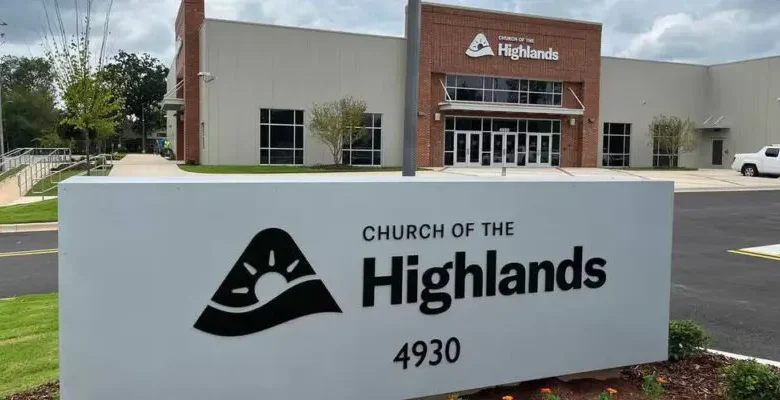Unveiling the Church of the Highlands: A Comprehensive Analysis

The Church of the Highlands, a rapidly growing megachurch headquartered in Birmingham, Alabama, has long been a subject of intrigue and debate. Known for its energetic worship services, charismatic leadership, and expansive reach, the church has attracted a large following while also facing its share of controversies. This article delves into the complex world of the Church of the Highlands, offering a comprehensive analysis of its rise, influence, and the controversies that have surrounded it.
The Rise of the Church of the Highlands
Founded in 2001 by Pastor Chris Hodges, the Church of the Highlands began as a modest congregation with a clear mission: to help people connect with God and discover their purpose. Over the years, the church experienced exponential growth, becoming one of the largest churches in the United States with over 20 campuses across Alabama and an average weekly attendance exceeding 50,000.
The church’s success can be attributed to several factors, including its focus on relevant, engaging sermons, a strong sense of community, and a commitment to outreach and service. The Church of the Highlands has also leveraged modern technology, with live-streamed services and a robust online presence that allows it to reach a global audience.
The Church’s Influence and Reach
The Church of the Highlands is not just a religious institution; it has become a significant cultural force in Alabama and beyond. Its influence extends beyond the pulpit, impacting local politics, education, and social services. The church has established the Highlands College, a ministry training school, and actively partners with local organizations to address community needs.
Moreover, the Church of the Highlands is known for its “Dream Centers,” which provide assistance to underserved communities. These centers offer everything from food and clothing to job training and healthcare, embodying the church’s mission to serve both the spiritual and physical needs of people.
Controversies and Criticisms
Despite its many achievements, the Church of the Highlands has not been immune to controversy. Critics have raised concerns about the church’s financial transparency, its ties to influential political figures, and its approach to social issues. These criticisms have sparked debates about the role of megachurches in society and the accountability of religious institutions with significant resources and influence.
One of the most notable controversies involved Pastor Chris Hodges’ social media activity, which some interpreted as endorsing divisive political views. This incident led to widespread backlash and prompted the church to issue public apologies and reassess its social media policies.
Additionally, some former members and employees have spoken out about the church’s internal culture, describing it as rigid and controlling. These accounts have fueled discussions about the pressures of maintaining a megachurch and the potential pitfalls of rapid growth.
The Church’s Response to Criticism
In response to the controversies, the Church of the Highlands has taken steps to address concerns and rebuild trust within the community. The church has emphasized its commitment to transparency, releasing financial reports and providing detailed information about its operations. It has also sought to engage in open dialogue with critics and has made efforts to diversify its leadership and programming.
Pastor Chris Hodges and other church leaders have acknowledged past mistakes and have expressed a desire to learn and grow from the experiences. They have reiterated their dedication to the church’s mission and have taken steps to ensure that the Church of the Highlands remains a welcoming and inclusive space for all.
The Future of the Church of the Highlands
As the Church of the Highlands continues to navigate its challenges, it remains a powerful presence in the religious landscape. The church’s ability to adapt and respond to criticism will likely play a crucial role in its future. With a strong foundation and a clear vision, the Church of the Highlands has the potential to continue making a positive impact on its members and the broader community.
Looking ahead, the church’s leaders will need to balance the demands of growth with the need for accountability and transparency. By staying true to its mission and addressing the concerns of its critics, the Church of the Highlands can continue to be a force for good in a complex and changing world.
Conclusion
The Church of the Highlands is a multifaceted institution with a significant impact on its community and beyond. While it has faced its share of controversies, it has also demonstrated a willingness to learn and evolve. As the church moves forward, it will be important for both its leaders and its members to remain committed to the values of transparency, accountability, and service that have been central to its success. Through these efforts, the Church of the Highlands can continue to be a beacon of hope and inspiration for many.




